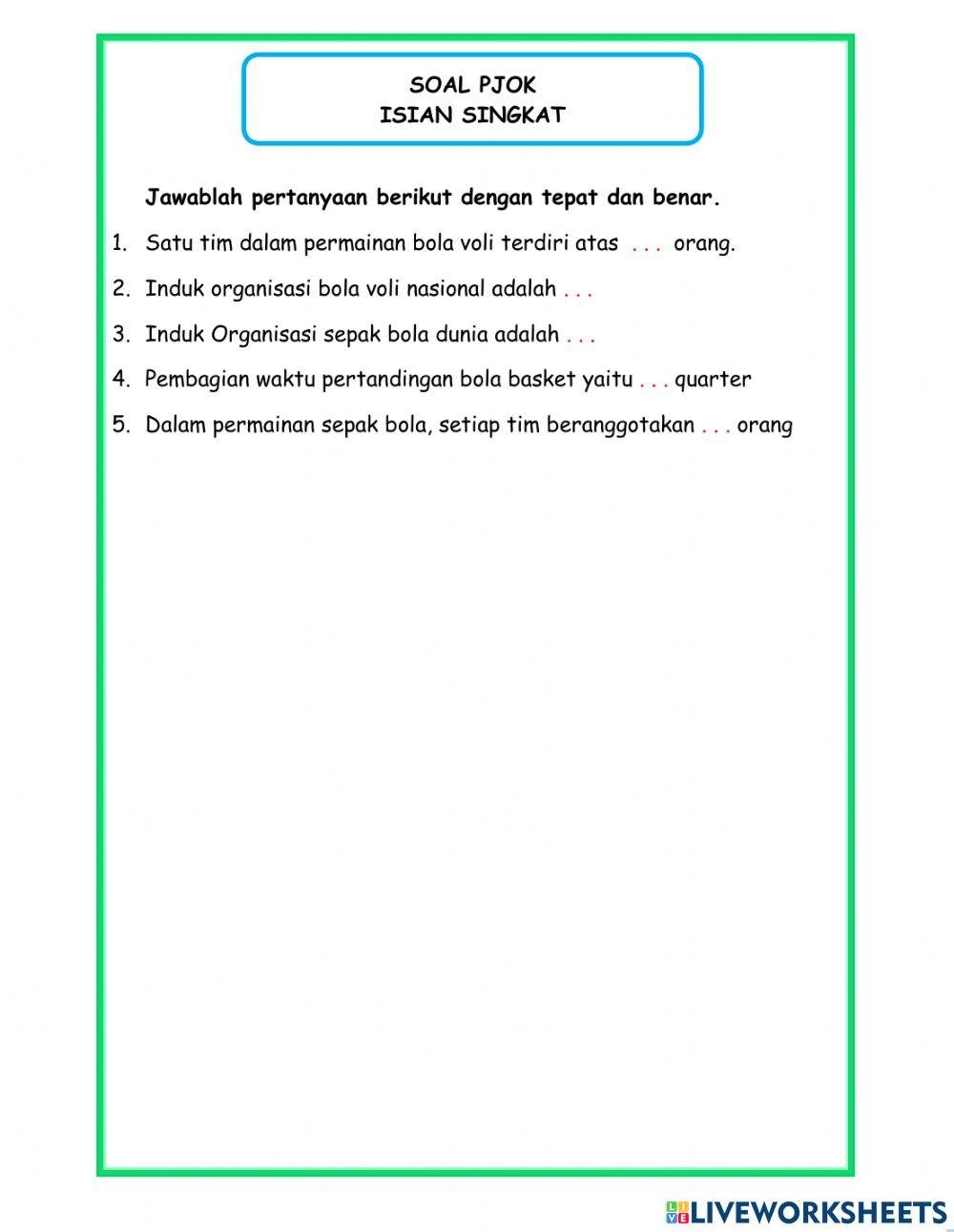
In a basketball game, the pembagian waktu pertandingan bola basket yaitu … quarter structure divides the match into four distinct quarters. This format keeps the pace exhilarating and allows teams to regroup between each quarter, strategizing for the next segment of the game.
Every quarter lasts for a specific duration, typically 12 minutes in the NBA, 10 minutes in FIBA games, and 20 minutes in college basketball. Understanding this time division helps fans and players alike appreciate the rhythm and strategy involved in this fast-paced sport. Whether you’re a seasoned viewer or a newcomer, knowing how the game breaks down enhances your overall experience.
Pembagian Waktu Pertandingan Bola Basket Yaitu Quarter
Basketball is an exciting sport that captivates millions around the globe. One of the intriguing aspects of basketball is how the game is divided into quarters. Understanding the quarter system in a basketball game is vital for fans, players, and teams alike. This article will provide a comprehensive view of the time division in basketball, focusing on the four quarters that make up the game, their significance, how they are structured, and other related topics.
Understanding the Quarter Structure in Basketball
In basketball, a game consists of four quarters. Each quarter has a set duration, and the structure of these quarters impacts the pace and strategy of the game. Here’s a breakdown of how the quarter system works, particularly in professional leagues like the NBA.
– **Duration of Quarters**:
– In the NBA, each quarter lasts for 12 minutes.
– In college basketball, each quarter typically lasts for 10 minutes.
– International games, governed by FIBA, also consist of 10-minute quarters.
This difference in the length of quarters between leagues plays a significant role in the overall game strategy. Shorter quarters can lead to faster-paced games, while longer quarters allow for more extended play.
Significance of Quarters in a Game
Quarters serve several important functions in a basketball game:
– **Rest Periods**: Between quarters, players get a brief rest to recover and strategize. In the NBA, there is a short break of about 2-3 minutes between each quarter, allowing teams to regroup and make adjustments.
– **Strategy and Game Flow**: Each quarter presents teams with a new opportunity to adjust their tactics. Coaches analyze performance during the quarter to optimize their strategies for the following periods.
– **Momentum Shifts**: Quarters allow for momentum changes. A strong performance in one quarter can propel a team forward, while a poor showing can motivate a team to improve in the next quarter.
How Timeouts Work During Quarters
Timeouts play a crucial role in managing the game within its quarters.
– **Types of Timeouts**:
– **Full Timeouts**: These last for 100 seconds and give teams ample time to regroup.
– **30-Second Timeouts**: These offer a quicker break, lasting only 30 seconds.
– **Strategic Use of Timeouts**: Coaches can call timeouts to halt the momentum of the opposing team, to change their game plan, or to give players a breather when the game becomes particularly intense.
Quarter Breaks: Halftime and End of Game**
While the game consists of four quarters, there are specific breaks that players and teams must navigate.
– **Halftime**: This occurs after the second quarter, giving players a 15-minute break to rest and regroup. It’s a pivotal time for teams to assess their performance and make necessary adjustments. Coaches hold discussions on strategies and provide players with vital feedback.
– **End of Game**: If the game is tied at the end of the four quarters, teams must prepare for overtime. Overtime periods typically last for 5 minutes, and the structure remains similar to that of the quarters, allowing teams to make tactical adjustments.
Influence of Quarters on Game Strategy
Understanding how quarters affect game strategy is essential for players and coaches. Here are some aspects to consider:
– **Pacing**: Teams often manage their energy and pacing over the course of four quarters. Players might conserve energy during the first half to ensure they have enough stamina for a strong finish.
– **Scoring Strategy**: Coaches may adopt different scoring strategies depending on the quarter. For instance, they might focus on aggressive offense during the first two quarters and shift to a more defensive stance in the final quarters as they aim to maintain a lead.
– **Substitution Patterns**: The quarter system influences how coaches substitute players. Coaches must consider players’ fatigue and performance levels, ensuring that they have fresh legs for critical moments as the game progresses.
Quarter Statistics and Analysis
Statistics play a critical role in analyzing performance throughout the four quarters.
– **Quarter-by-Quarter Analysis**: Teams often review statistics from each quarter to identify strengths and weaknesses. This data helps them to modify their strategy accordingly.
– **Player Performance Metrics**: Individual player statistics are often broken down by quarter. Coaches look at scoring, assists, rebounds, and turnovers for each quarter to assess player performance in various game situations.
– **Trends Over Time**: Analyzing trends across multiple games helps teams understand their performance across quarters. For example, if a team consistently performs poorly in the third quarter, they may need to rethink their approach for that period.
Common Misconceptions About Quarters
With various leagues and levels of play, there are several misconceptions regarding quarters in basketball.
– **Misconception 1: All Quarters are the Same Length**: As mentioned earlier, quarters can vary in length depending on the league. Fans should be aware of these differences when watching games.
– **Misconception 2: Overtime is Just Another Quarter**: Overtime is shorter than regular quarters and has its own strategy. Teams often play more aggressively in overtime, as every possession becomes more critical.
– **Misconception 3: Timeouts are Unrestricted**: Each team has a limited number of timeouts they can use in a game. Understanding how to manage these timeouts within the structure of quarters is essential for effective game management.
Tips for Fans to Enjoy Watching Quarters
For avid basketball fans, following along with the quarter structure can enhance the viewing experience. Here are some tips:
– **Watch Player Patterns**: Notice how players switch up their play style in different quarters. This observation adds depth to your understanding of the game.
– **Follow the Coaches**: Pay attention to timeouts and how coaches strategize during breaks. This insight can help fans appreciate the tactical elements of basketball.
– **Engage in Discussions**: Share your thoughts with fellow fans about quarter performances. Analyzing how teams perform in each quarter can lead to deeper conversations about game dynamics.
Understanding the quarter system in basketball is essential for anyone who wants to appreciate the game fully. Whether you’re a player, coach, or fan, knowing how quarters function helps you grasp the strategies and flow of basketball. With four distinct quarters to navigate, teams must adapt their gameplay, pacing, and strategies to maximize their chances of victory. As you continue to follow basketball, keep an eye on how these quarters shape the game and the stories that unfold on the court.
Teknik Dasar Basket, Peraturan Permainan, dan Peran Pemain Basket || MATERI
Frequently Asked Questions
“`html
How long is each quarter in a professional basketball game?
In a professional basketball game, each quarter lasts for 12 minutes. This format is used in leagues such as the NBA. Other leagues, such as FIBA, use a shorter quarter duration of 10 minutes.
What happens if the game is tied at the end of the fourth quarter?
If the game is tied at the end of the fourth quarter, the game goes into overtime. Overtime periods in the NBA last for 5 minutes, and the game continues until one team has a higher score at the end of an overtime period.
Are there any timeouts allowed during the quarters?
Yes, teams are allowed a specific number of timeouts during each quarter. In the NBA, each team has seven timeouts per game, with a limited number of timeouts allowed in each quarter. Coaches often use these timeouts to strategize or give players rest.
How does foul accumulation affect the game throughout the quarters?
Foul accumulation impacts how teams play throughout the quarters. In the NBA, once a team accumulates four team fouls in a quarter, the opposing team enters the bonus situation, allowing them to shoot free throws on each subsequent foul. This rule changes the dynamics of how players defend and manage fouls during the game.
What is the role of the shot clock in relation to the quarters?
The shot clock is crucial in keeping the game pace fast and involves the time a team has to take a shot during each possession. In the NBA, teams have 24 seconds on the shot clock. If they do not take a shot within this time frame, they lose possession, ensuring that the game remains dynamic throughout all four quarters.
“`
Final Thoughts
The structure of basketball games is clear and organized. Each game is divided into four quarters, which define the pace and intensity of the match. Players must manage their energy and strategy across these distinct segments to secure victory.
Understanding the time allocation is crucial for both players and fans. Pembagian waktu pertandingan bola basket yaitu … quarter. This division affects everything from playing style to coaching decisions, making it essential to grasp.




